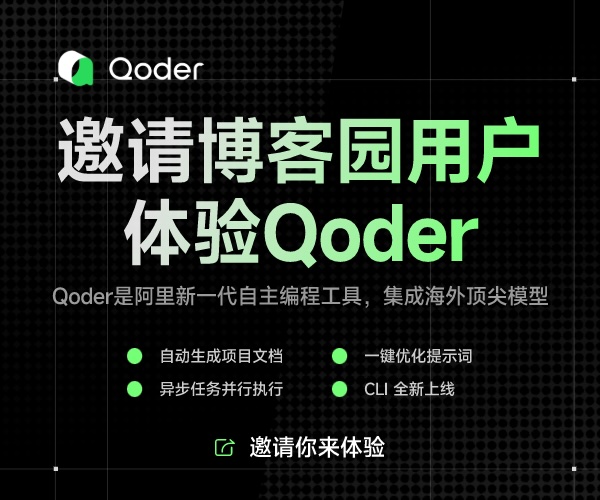表示一個作用于某對象結構中的各元素的操作。它可以在不改變各元素的類的前提下定義作用于這些元素的新的操作。
“Represent an operation to be performed on the elements of an object structure. Visitor lets you define a new operation without changing the classes of the elements on which it operates.” – GoF
類層次結構中可能經常由于引入新的操作,從而將類型變得很脆弱。比如假定三個類Rectangle、Triangle和Line繼承自抽象類Shape,現在由于某種原因需要在抽象類Shape中增加一個abstract (或者pure virtual)方法,如果使用通常的方法,那么它所有的子類,即Rectangle、Triangle和Line都需要修改。
由于需求的改變,某些類層次結構中常常需要增加新的行為(方法),如果直接在基類中做這樣的更改,將會給子類帶來很繁重的變更負擔,甚至破壞原有的設計。Visitor設計模式就是在不更改類層次結構的前提下,在運行時根據需要動態地為類層次結構上的各個類動態添加新的操作(方法)。
下面是Visitor模式的UML類圖:

Visitor設計模式要解決的問題:
- 類層次結構不變,但類的方法需要增加;
- 預料到基類有更改,但不知道是何種具體更改。
要增加一個方法,實際上就是增加一個Visitor的子類。
業務實例:
有Rectangle和Circle兩種形狀,在不改動他們代碼的情況下,分別為它們增加填充(Fill)和附加文字(AddText)的功能。
實現上面業務實例的C++代碼:
// Visitor.h
#include <iostream>
using namespace std;
class Visitor;
class Shape
{
public:
// draw為已經確知需要的方法
virtual void draw() = 0;
// 1. 預料將來可能會引入新的方法,因此在這里預留一個accept方法
// 2. 可以通過下面的accept方法,為Shape的子類增加一個或多個方法
virtual void accept(Visitor *visitor) = 0;
public:
virtual ~Shape()
{
cout << "in the destructor of Shape..." << endl;
}
};
class Rectangle : public Shape
{
public:
void draw();
void accept(Visitor *visitor);
public:
~Rectangle()
{
cout << "in the destructor of Rectangle..." << endl;
}
};
class Circle : public Shape
{
public:
void draw();
void accept(Visitor *visitor);
public:
~Circle()
{
cout << "in the destructor of Circle..." << endl;
}
};
class Visitor
{
public:
// 注意此處參數為具體類,而非抽象類Shape。
// Shape有多少個子類,就需要在此處重載多少次visit方法。
// 除非使用RTTI,則可以只有一個visit方法,并且該方法的參數類型為抽象的Shape*,同時需要在visit方法中確定,
// 傳入的參數到底是Shape的哪個具體的子類。
virtual void visit(Rectangle *shape) = 0;
virtual void visit(Circle *shape) = 0;
public:
virtual ~Visitor()
{
cout << "in the destructor of Visitor..." << endl;
}
};
// 假定要為Shape的子類增加一個填充(Fill)操作,那么就為Visitor增加一個子類,即FillVisitor
class FillVisitor : public Visitor
{
public:
void visit(Rectangle *shape)
{
// 為類Rectangle增加一個方法,由于實現這個新方法可能需要用到原來對象中的屬性或者方法,因此需要
// 將自身(this)傳到這里。理論上而言,如果不用到原來對象的原有的屬性或者方法,那么visit方法是可以
// 沒有參數的;另外一種情況就是,如果必要,visit方法也可以擁有多個參數
cout << "Here is the newly added Fill() method for class Rectangle." << endl;
}
void visit(Circle *shape)
{
// 為類Circle增加一個方法,由于實現這個新方法可能需要用到原來對象中的屬性或者方法,因此需要
// 將自身(this)傳到這里。理論上而言,如果不用到原來對象的原有的屬性或者方法,那么visit方法是可以
// 沒有參數的;另外一種情況就是,如果必要,visit方法也可以擁有多個參數
cout << "Here is the newly added Fill() method for class Circle." << endl;
}
public:
~FillVisitor()
{
cout << "in the destructor of FillVisitor..." << endl;
}
};
// 假定要為Shape的子類增加一個附加文字(AddText)操作,那么就為Visitor增加一個子類,即AddTextVisitor
class AddTextVisitor : public Visitor
{
public:
void visit(Rectangle *shape)
{
// 為類Rectangle增加一個方法,由于實現這個新方法可能需要用到原來對象中的屬性或者方法,因此需要
// 將自身(this)傳到這里。理論上而言,如果不用到原來對象的原有的屬性或者方法,那么visit方法是可以
// 沒有參數的;另外一種情況就是,如果必要,visit方法也可以擁有多個參數
cout << "Here is the newly added AddText() method for class Rectangle." << endl;
}
void visit(Circle *shape)
{
// 為類Circle增加一個方法,由于實現這個新方法可能需要用到原來對象中的屬性或者方法,因此需要
// 將自身(this)傳到這里。理論上而言,如果不用到原來對象的原有的屬性或者方法,那么visit方法是可以
// 沒有參數的;另外一種情況就是,如果必要,visit方法也可以擁有多個參數
cout << "Here is the newly added AddText() method for class Circle." << endl;
}
public:
~AddTextVisitor()
{
cout << "in the destructor of AddTextVisitor..." << endl;
}
};
// Visitor.cpp
#include "Visitor.h"
void Rectangle::draw()
{
cout << "Implement method Rectangle::draw() here!" << endl;
}
void Rectangle::accept(Visitor *visitor)
{
visitor->visit(this); // 轉發到visitor的visit方法,并將this作為參數傳遞過去
}
void Circle::draw()
{
cout << "Implement method Circle::draw() here!" << endl;
}
void Circle::accept(Visitor *visitor)
{
visitor->visit(this); // 轉發到visitor的visit方法,并將this作為參數傳遞過去
}
// PatternClient.cpp
#include "Visitor.h"
int main(int argc, char **argv)
{
Visitor *visitor1 = new FillVisitor();
Shape *rectangle = new Rectangle();
// 調用該形狀已經實現的方法
rectangle->draw();
// 通過visitor1調用新增加的方法
rectangle->accept(visitor1);
Shape *circle = new Circle();
// 調用該形狀已經實現的方法
rectangle->draw();
// 通過visitor1調用新增加的方法
circle->accept(visitor1);
cout << "~~~~~~~~~~~~~~~~~~~~~~~~~~~~~~~~~~~~~~~~~~~~~~~~~~~~~~~~~~~~~~" << endl;
Visitor *visitor2 = new AddTextVisitor();
// 通過visitor2調用新增加的方法
rectangle->accept(visitor2);
// 通過visitor2調用新增加的方法
circle->accept(visitor2);
cout << "~~~~~~~~~~~~~~~~~~~~~~~~~~~~~~~~~~~~~~~~~~~~~~~~~~~~~~~~~~~~~~" << endl;
delete visitor1;
delete visitor2;
delete rectangle;
delete circle;
return 0;
}
運行結果:
Implement method Rectangle::draw() here!
Here is the newly added Fill() method for class Rectangle.
Implement method Rectangle::draw() here!
Here is the newly added Fill() method for class Circle.
~~~~~~~~~~~~~~~~~~~~~~~~~~~~~~~~~~~~~~~~~~~~~~~~~~~~~~~~~~~~~~
Here is the newly added AddText() method for class Rectangle.
Here is the newly added AddText() method for class Circle.
~~~~~~~~~~~~~~~~~~~~~~~~~~~~~~~~~~~~~~~~~~~~~~~~~~~~~~~~~~~~~~
in the destructor of FillVisitor...
in the destructor of Visitor...
in the destructor of AddTextVisitor...
in the destructor of Visitor...
in the destructor of Rectangle...
in the destructor of Shape...
in the destructor of Circle...
in the destructor of Shape...
結果符合預期。
由上面的代碼可以很清楚地知道,我們如果要為Rectangle或Circle增加新方法,只需要多增加一個Visitor的子類即可,而Rectangle或Circle這兩個類本身的代碼,沒無任何改動。
上面代碼對應的UML類圖:

雙向分發(Double Dispatch)
- accept(Visitor *visitor)方法在Shape的子類 (如Rectangle)中;
- visit(Rectangle *rectangle)等visit方法在Visitor的子類 (如FillVisitor)中;
- 兩處重要的多態特性:
n 調用accept方法的對象之多態辨析,即是誰調用accept方法?(在本例中,是Rectangle還是Circle?)
n accept方法的參數之多態辨析,即accept方法的參數到底是那個Visitor的子類
正是這兩處多態特性的使用,就形成了所謂的雙向分發(Double Dispatch)機制,即首先將visitor作為參數傳遞給Shape的子類(在本例中即Rectangle和Circle);然后在Shape子類的accept方法中調用visitor的visit方法,而且visit方法的參數是this,這樣Shape子類就將自己傳遞到了visitor類的visit方法中,然后在visitor的visit方法中為Shape的子類增加需要的新的行為。這就是雙向分發的核心思想,即visitor被傳遞(分發)了一次,即visitor被傳遞到Shape子類中一次,Shape的子類也被傳遞(分發)了一次,即Shape的子類被傳遞到visitor中一次。
從更高層次來看這個問題:Shape中的accept()以Visitor作為參數,Visitor中的visit以Shape作為參數。
上面給出代碼的調用順序:





